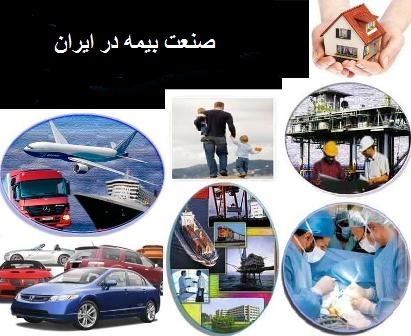صنعت بیمه در ایران- سه ماهه سوم 2015
BMI Industry View
BMI View: We have revised down our forecasts for the Iranian insurance market as a whole and are now predicting a slight fall across the sector. This is largely attributable to continued western sanctions, which have suppressed wider macroeconomic growth. However, the recent framework nuclear agreement may provide the stimulus for high rates of growth over the second half of the year if financial and oil-related sanctions are lifted, even partially.

The Iranian insurance market is by regional standards developed. Taking into account the relative size of the non-life segment relative to its life counterpart; it will remain the key source of growth for the sector as a whole. Compulsory motorists' third party insurance (CMPTL) and health insurance remain by far the dominant lines. These will constitute the greatest driving forces behind the increase in premiums over 2015.The regulator, and leading insurers, continues to provide only limited data. However, recent information suggests that total premiums are growing strongly.
Historically, the interrelated issues of sanctions and structurally high inflation have impeded the development of Iran's insurance sector. Sanctions have limited local insurers' access to global reinsurance markets, in turn adversely affecting retention ratios and insurers' profitability levels. Sanctions have also contributed to high annual inflation by driving up the price of goods. Rising inflation has been made worse by the government's decision to monetise its deficit rather than implement unpopular, sweeping subsidies cuts. Overall, high inflation has been a huge disincentive for households that might otherwise enter into a long-term contract with a life insurance company. Nevertheless, with gross premiums of USD9bn in 2015, it rates as a substantial market opportunity in regional terms.
Looking ahead, the recent framework agreement between Iran and international powers over its nuclear programme could give the insurance sector a significant boost. Removing, even partially, international sanctions would help reduce inflation. Moreover, a reduction in the barriers to Iranian companies' access to financial markets would also contribute to an improved forecast for premiums growth. As such,, the wider economy should enjoy greater stability than it has done in recent years, which in turn should lead to more consistent rates of growth in the insurance sector. This greater macroeconomic stability should help mitigate fluctuations to the Iranian Riyal, which historically has prevented accurate readings of the insurance sector in terms of local currency.
Over the long-run there exists considerable upside potential in Iran's insurance sector. Bimeh Iran, the large state-owned company, possesses significant scale. As one of the largest insures in the Middle East, it would rank as medium-large in most countries. It would benefit from greater access to international markets. However, heavy handed state involvement has given Bimeh Iran the substantial advantage of dominating the local reinsurance market, which in turn pushes up reinsurance premiums due to a lack of competition.
Despite the outcome of Iran's rapprochement with international powers, long-term challenges will continue to curtail growth, ensuring that the market operates below its capacity. An opaque regulatory system, heavy government intervention and a lack of public awareness of the benefits of many insurance solutions show little signs of improving over the forecast period. As such, we believe that growth will mainly be driven by an increase in the volume of policyholders for basic compulsory lines. It is unlikely that the market breakdown for each sub-sector will change greatly. The same can be said for the market's competitive landscape, with Bimeh Iran likely to maintain its dominant position, in part because the government views it as a strategic asset.
A lack of market consolidation or any meaningful change to the sector's competitive structure will hinder the sector's development. It will prevent many insurers acquiring scale, which would allow them to boost their profitability by absorbing some risk rather than seeking recourse ton outwards reinsurance. As such, the market will continue to be characterised by its fragmented nature, made up of many sub-scale players.

These only operate across basic lines and compete almost exclusively in terms of price. This in turn discourages product innovation or investment in non-compulsory lines.
Traditionally, high and erratic growth
in claims have hindered growth across the sector. In 2016 and beyond, we anticipate year-on-year
growth in claims to stabilise. Falling currency fluctuations and more stable economic growth than in previous
years will contribute to this relative stability. Nonetheless, there remains a risk that claims will be
subject to large fluctuations given the continued uncertainly of economic reforms in Iran and the nuclear
negotiations. In addition, the market's competitive landscape should not alter significantly over the forecast period
with the result that claims will remain high, relative to overall premiums as local insurers struggle to
significantly boost their overall profitability levels and achieve significant scale.
Key BMI Forecasts for 2015:
■ We think that total premiums will fall by 2.2% to USD7.9bn.
■ Life insurance premiums should grow by 0.2% to USD0.8bn in 2015.
■ Non-life premiums should fall by% to USD7.1bn in 2015.
■ Within the non-life segment, motor vehicle-related premiums should fall by 1.4% to USD4.5bn in 2015.
Health insurance premiums should fall by 3.7% to USD1.6bn in 2015.
گزارش تحلیلی بیزینس مانیتور- صنعت بیمه در ایران- سه ماهه سوم 2015

